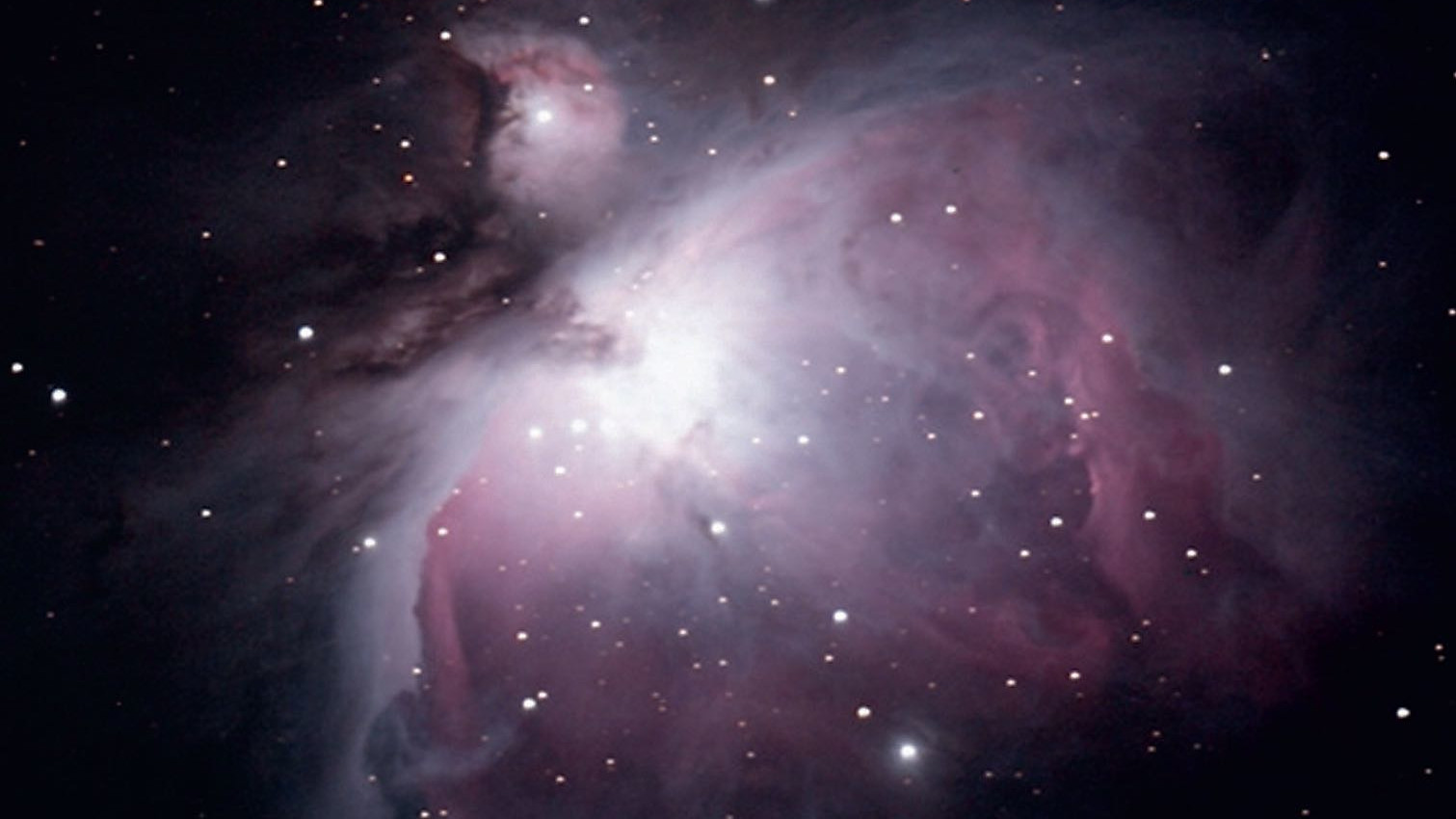M42 – something for everyone in Orion
The stellar nursery at the heart of the Orion Nebula allows city astronomers to explore the details of nebula structures.
 The Orion Nebula M42 has something to offer every observer. Hannes Bachleitner / CCD Guide
The Orion Nebula M42 has something to offer every observer. Hannes Bachleitner / CCD GuideThe Orion Nebula M42 offers city astronomers a double observing experience: on the one hand, it’s great for testing the performance of a telescope, in particular its resolution capacity, using the θ1 Orionis multiple star system, which lies in the bright central area, the so-called Huygens region. On the other hand, the area around the Trapezium Cluster offers the chance to penetrate the deep nebula structures of a celestial object. An experience that is usually denied to the city observer.
Amazing insights
 Drawing of M 42.
Rainer Mannoff
Drawing of M 42.
Rainer MannoffBoth can be achieved with an inexpensive refractor with a 60 mm aperture, provided that the telescope is attached to a stable mount. At 35× three of the Trapezium Cluster’s stars can be clearly resolved, with 56× you can even resolve the B component of the Trapezium, with a brightness of mag. 7.9 to 8.7 the faintest member of the four stars that make up the quartet. Now the nebula's so-called Sinus Magnus region is also recognisable as a completely dark area, although it's barely separated from the bright central region.
A change to a refractor with a 80 mm or 100 mm aperture does not produce significantly better results with regard to the resolution of the Trapezium’s stars compared to the smaller telescope, apart from perhaps from a higher sharpness of separation. However, the results with the nebula structures is different: with 80 mm and 30× magnification more structures are visible, at 66× fine areas of light and dark appear in the nebula, which can be identified as cloud-like at 85×. Another increase in contrast offers a four-inch aperture: the areas of light and dark appear even more finely structured and the view of the Huygens region is generally more stable.
The allure of deep sky
The switch to a Maksutov-Cassegrain mirror telescope with a 200-mm aperture and a focal length of 2,000 mm brings a significant enhancement. However, even this device cannot detect the two faintest E and F components of θ1 Orionis, since objects with an apparent magnitude of 11 or more are generally inaccessible to city astronomers. Nevertheless, the mirror telescope, regardless of the chosen magnification, can resolve the delicate cloud structures of the bright areas of the nebula so that they appear considerably more plastic and with more contrast than with a refractor.
At 216×, for example, the Huygens region offers a breathtaking image. It fills the eyepiece, with the Sinus Magnus emerging as a dark area with clearly defined edges. With a little patience and very good seeing you may be able to even see lighter filaments appear within the dark area – something that you otherwise only see on photographs.
As a result, M42 offers a range of observing possibilities for every (city) astronomer, whose diversity can hardly be surpassed – regardless of which telescope you use.
 Orion Nebula M42 in the constellation of Orion. J. Scholten
Orion Nebula M42 in the constellation of Orion. J. ScholtenAuthor: Karl-Peter Julius / Licence: Oculum-Verlag GmbH
